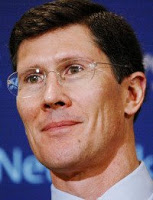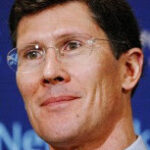The Shame of Not Knowing Your Audience

We’ve seen a lot of shame-based stories lately. Not only are people outraged at the behavior of Wall Street execs and bankers, they are angry that none of them seem to take any responsibility for the nation’s financial problems. Since Wall Street folks are absent shame, the media is more than happy to heap piles of it onto them. This is a poor time to display a lack of accountability.

John Thain, formally the leader of Merrill Lynch, thought he deserved a $10M bonus for the stellar year he delivered for his company in 2008. During the 418 days Thain was CEO of Merrill (Dec 1, 2007 – Jan 22, 2009) the firm reported losses of $37.11 billion. For those of you keeping score at home, Thain presided over a firm that lost about $89 million every day he was CEO.
Thain’s only accomplishment was putting lipstick on the pig that Merrill had become and selling it to Bank of America. What stunned me was not that Thain had the ego to ask for a $10 million bonus, but that he had any sliver of self-esteem left after his dismal performance.
There are some who believe he deserves a bonus, like Evan Newmark who writes the Deal Journal Blog for The Wall Street Journal. The majority of the public, however, believes that there is a right answer to the bonus question and it’s “no way in hell!”
But there is collateral damage in the financial disaster. Business aviation is suffering because they make the products used by the executives being vilified. How do you communicate in that environment? The business aviation industry is fighting back with an aggressive PR campaign, as reported by Ragan Communications. No one really hates business jets. People object to executives, who are reliant on taxpayers for solvency, using them.
Cessna has a particularly good ad.
The fundamental rule of all good PR is know your audience. If you understand your audience, you know what they need to hear from you – something that will address their feelings and concerns. The people who are mad at the auto execs and Wall Street bankers are probably not the people Cessna relies on for its business. So it makes sense to fight back aggressively, but in a targeted way. It’s very well done.
In the case of the bankers, they do rely on all of us for their livelihoods and we have reminders every day of just how far off their “audience focus” was. Their audience used to be the deal-makers and bankers who drove the economy. In essence, they focused inward… spending lots of time talking to themselves.
Bob Roemer, a good friend, former boss and one of the best crisis communicators I know, wrote a great book called “When the Balloon Goes Up-The Communicator’s Guide to Crisis Response”. In it, he talks about organizations that defend the wrong thing during a crisis. Banks have definitely fallen into that category.
Especially Wells Fargo.
The company blamed the media in full page ads in the New York Times and Washington Post for the damage to its reputation when the AP reported the bank (which got $25 billion in bailout money) was holding an Employee Recognition event at two casinos in Vegas.
The ad seeks to convince us that this is merely a PR problem (misleading media coverage) and not an ACTUAL problem (poor executive judgment).
They seemed stunned that people are angry.
Embedded video from CNN Video Campbell Brown of CNN put it best in her commentary, “Give me a break.”
Wells Fargo has a whole pretty section on Corporate Social Responsibility on its Website. But it doesn’t make up for the one corporate responsibility they seem to lack these days.
The responsibility to know their audience.
Bill Salvin
